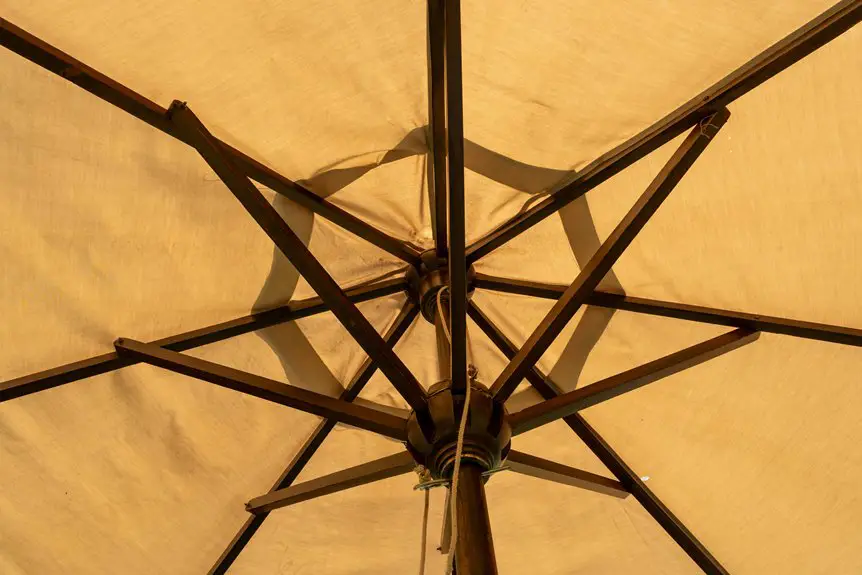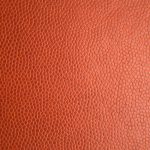You can Scotchgard bouclé furniture to protect it from stains and spills, but you need to apply it carefully to avoid damaging the delicate loops. First, clean and dry the fabric, then test Scotchgard on a hidden spot to check for any reaction. Use a gentle spray at the right distance to keep the texture intact. Taking these steps helps maintain bouclé’s unique look and feel. Keep exploring for tips on application and care.
Table of Contents
Key Takeaways
- Scotchgard can be safely applied to bouclé upholstery if it is a version labeled safe for natural and synthetic fiber blends.
- Always test Scotchgard on a small, hidden area of bouclé fabric before full application to avoid damage or discoloration.
- Clean and thoroughly vacuum bouclé furniture before applying Scotchgard to ensure optimal protection and adhesion.
- Apply Scotchgard evenly from the recommended distance, avoiding over-saturation to protect the delicate looped texture of bouclé.
- For stubborn stains or deep cleaning, consult professionals experienced with bouclé to maintain fabric integrity and appearance.
Understanding Bouclé Fabric and Its Characteristics
Bouclé fabric stands out for its unique looped texture, which gives your furniture a cozy, tactile appeal. When you choose bouclé, you get a material made from loops of yarn that create a nubby, uneven surface.
This texture isn’t just stylish—it also adds durability and hides minor stains or wear better than flat fabrics. You’ll find bouclé typically made from wool, cotton, or synthetic blends, offering a soft yet sturdy feel.
Its breathable nature keeps you comfortable, but those loops can trap dirt or spills if you’re not careful. Understanding these characteristics helps you appreciate why bouclé is both beautiful and practical, while also guiding how you care for and protect your furniture effectively over time.
What Is Scotchgard and How Does It Work?
Scotchgard is a protective spray designed to shield your furniture from stains and spills before they set in. When you apply it, the spray creates an invisible barrier that repels liquids and blocks dirt from penetrating the fabric fibers.
This barrier helps prevent stains from soaking into your upholstery, making spills easier to clean up. Scotchgard works by coating the surface with a thin, water- and oil-repellent layer, which doesn’t change the look or feel of your fabric.
By using it, you reduce the chance of permanent damage from everyday accidents. Keep in mind, for the best results, apply Scotchgard evenly and allow it to dry thoroughly before using your furniture again.
This way, you maintain your upholstery’s fresh appearance longer.
Is Scotchgard Safe for Bouclé Upholstery?
You might wonder if Scotchgard is safe for your delicate bouclé upholstery.
It’s important to evaluate how the chemicals interact with the fabric and follow proper application steps to avoid damage.
Let’s look at what you should know before spraying.
Chemical Compatibility With Bouclé
Although some cleaning products can damage delicate fabrics, you can use Scotchgard on bouclé upholstery with proper care.
Scotchgard’s formula is designed to protect without compromising the fabric’s texture or color. However, bouclé’s unique looped fibers require you to take into account chemical compatibility carefully.
Here are four key points to keep in mind:
- Scotchgard is generally safe for synthetic and natural fiber blends common in bouclé.
- Avoid products with harsh solvents that can weaken or discolor fibers.
- Test a small, inconspicuous area first to verify no adverse reactions.
- Choose Scotchgard versions labeled safe for upholstery to prevent residue buildup or stiffness.
Application Safety Tips
When applying any protective spray on bouclé upholstery, it’s crucial to follow safety guidelines to preserve the fabric’s texture and appearance.
First, test the Scotchgard on a hidden area to verify no discoloration or damage occurs. Always apply in a well-ventilated space to avoid inhaling fumes. Wear gloves to protect your skin and keep pets and children away during application.
Hold the can about 6-8 inches from the fabric, spraying evenly in light, sweeping motions to prevent saturation. Allow the fabric to dry completely before using the furniture to avoid trapping moisture, which can harm bouclé.
Finally, follow the product instructions carefully and avoid over-application, as excessive layering can affect the fabric’s softness and look.
Preparing Bouclé Furniture Before Applying Scotchgard
Before applying Scotchgard, make certain your bouclé furniture is clean and dry to maximize protection. Proper preparation is key to ensuring the spray adheres well and offers lasting defense.
Ensure your bouclé furniture is clean and dry before applying Scotchgard for optimal protection.
Follow these steps:
- Vacuum thoroughly using a brush attachment to remove dust and debris trapped in the textured loops.
- Spot-clean any stains with a gentle fabric cleaner suitable for delicate fibers, then let it dry completely.
- Avoid saturating the fabric to prevent damage or distortion of the bouclé texture.
- Test a small, inconspicuous area with Scotchgard to check for any adverse reactions before full application.
Step-by-Step Guide to Applying Scotchgard on Bouclé
Applying Scotchgard to your bouclé furniture involves a few simple steps that assure even coverage and effective protection.
First, confirm the room is well-ventilated and your furniture is clean and dry. Shake the Scotchgard can vigorously for about 30 seconds.
Hold the can 6 to 8 inches away from the fabric, spraying in a steady, sweeping motion. Apply a light, even coat to avoid saturating the textured loops.
Let the first coat dry for at least 30 minutes before deciding if a second light coat is necessary. Avoid oversaturating to prevent altering the fabric’s look or feel.
Once completely dry, usually after 2 to 4 hours, your bouclé furniture will be better protected against spills and stains, helping it stay beautiful longer.
Alternative Protective Treatments for Bouclé Fabric
Although Scotchgard is a popular choice for protecting bouclé fabric, you might want to explore alternative treatments that offer different benefits or suit your specific needs.
Scotchgard is common for bouclé protection, but exploring alternatives can better suit your specific needs.
Here are four alternatives to evaluate:
- Fabric Sealants – These create a thin, invisible barrier that repels liquids and stains without altering texture.
- Beeswax-Based Protectors – Natural and eco-friendly, they provide water resistance while maintaining fabric breathability.
- Silicone Sprays – Offer durable protection against moisture and dirt but use sparingly to avoid stiffness.
- Professional Fabric Treatments – Applied by experts, these often combine stain and water resistance tailored to bouclé’s unique weave.
Choosing the right option depends on your lifestyle, environmental preferences, and the level of protection you need for your bouclé furniture.
Tips for Maintaining and Cleaning Bouclé Upholstery
You’ll want to care for your bouclé upholstery daily by gently vacuuming and avoiding harsh scrubbing.
When stains happen, act quickly with mild solutions and blotting techniques to prevent damage.
For deep cleaning, consider professional services to keep your fabric looking fresh and vibrant.
Daily Bouclé Care
Since bouclé’s textured loops can trap dirt and dust easily, regular care is vital to keep your upholstery looking fresh.
You’ll want to establish a daily routine that prevents buildup and preserves the fabric’s unique texture. Here’s what you can do:
- Vacuum gently using a soft brush attachment to remove surface dust without damaging loops.
- Rotate cushions frequently to guarantee even wear and maintain shape.
- Avoid direct sunlight exposure to prevent fading and fiber weakening.
- Brush the fabric lightly with a soft-bristle brush to lift the loops and maintain the textured appearance.
Stain Removal Tips
When spills happen, acting quickly can prevent stains from setting into your bouclé upholstery.
First, gently blot the spill with a clean, absorbent cloth—never rub, as that pushes the stain deeper.
Use a mild detergent mixed with water to spot clean; dip a soft cloth in the solution and dab the stain carefully.
Avoid soaking the fabric, which can damage bouclé’s texture.
For oil-based stains, sprinkle a bit of cornstarch or baking soda to absorb the grease before brushing it off.
Always test any cleaning solution in an inconspicuous area first to verify it won’t discolor or damage your fabric.
After cleaning, allow the area to air dry completely.
Regular, gentle spot treatment helps keep your bouclé furniture looking fresh.
Professional Cleaning Advice
Handling minor stains on your bouclé furniture is just one part of upkeep; professional cleaning can extend the life and beauty of your upholstery.
You’ll want to schedule professional cleanings periodically to maintain the fabric’s texture and appearance. Here are four tips to keep in mind:
- Choose cleaners experienced with delicate fabrics like bouclé to avoid damage.
- Confirm that the cleaning methods used won’t shrink or distort the textured loops.
- Discuss any Scotchgard treatments beforehand to ascertain compatibility with professional products.
- Arrange for spot testing in inconspicuous areas to prevent unwanted discoloration.
Common Mistakes to Avoid When Protecting Bouclé
Though protecting bouclé might seem straightforward, you can easily make mistakes that compromise its texture and appearance.
First, don’t apply Scotchgard or any protector without testing it on a hidden area. Bouclé’s delicate loops can react unpredictably to chemicals.
Avoid soaking the fabric; over-wetting can cause shrinkage or distortion. When spraying, hold the can at the recommended distance and apply evenly—too much product leads to buildup and stiffness.
Never skip vacuuming or gentle cleaning before applying protectors, as trapped dirt can embed permanently. Also, resist the urge to scrub stains aggressively; this damages the loops.
Finally, don’t ignore manufacturer guidelines—each bouclé fabric may have specific care instructions.
When to Seek Professional Cleaning or Protection Services
If you notice stubborn stains or persistent odors on your bouclé furniture, it’s time to call in professional cleaners who specialize in delicate fabrics.
Professionals have the right tools and knowledge to handle bouclé’s unique texture without causing damage.
Expert cleaners understand bouclé’s delicate texture, ensuring thorough care without risking damage.
You should also seek expert help if:
- Your furniture requires deep cleaning beyond surface dust and spills.
- You want to apply Scotchgard or similar protection evenly and safely.
- You’re dealing with mold or mildew that home remedies can’t remove.
- You’re unsure about using DIY cleaning products that might harm delicate fibers.
Frequently Asked Questions
Can Scotchgard Be Used on Bouclé Clothing as Well as Furniture?
Using Scotchgard on bouclé clothing is like giving your favorite sweater a raincoat—it helps repel stains and moisture. Just spray lightly, test a small area first, and you’ll keep your fabric looking fresh and protected.
How Long Does Scotchgard Protection Typically Last on Bouclé Fabric?
You’ll find Scotchgard protection on bouclé fabric typically lasts about 6 to 12 months. It depends on usage and cleaning frequency, so you’ll need to reapply it periodically to keep your furniture well-protected.
Will Scotchgard Change the Texture or Color of Bouclé Upholstery?
When you apply Scotchgard, it gently whispers over your bouclé, usually preserving its cozy texture and rich color. You won’t notice much change, but always test a hidden spot first to be absolutely sure.
Can Scotchgard Protect Bouclé Fabric From Pet Stains and Odors?
You can use Scotchgard to protect bouclé fabric from pet stains and odors. It creates a barrier that repels liquids and prevents stains, helping you keep your furniture cleaner and fresher despite your pets’ messes.
Is It Safe to Use Scotchgard on Vintage or Antique Bouclé Furniture?
When it comes to vintage bouclé, you should tread carefully. Scotchgard might protect, but it could also harm delicate fibers or finishes. Always test a hidden spot first, and when in doubt, consult a professional cleaner.
- Does Chiffon Fabric Stink - July 15, 2025
- Does Chiffon Fabric Affect the Economy - July 15, 2025
- Does Cotton Fabric Have a Nap - July 15, 2025







